Space Names
People often ask our presenters about space names.
How did the planets get their names?
What about the names of their moons?
Who decides on space names?

In this blog we’ll find the answers.
And it’s really fascinating!
What’s in a Name?
The names of planets visible to the naked eye have been around for centuries.

The Solar System. Credit: NASA
After the invention of the telescope, astronomers needed names for newly discovered planets and moons.
Usually the discoverer could claim the honour of naming the new world.
Sometimes their chosen names weren’t popular and as a result alternatives came into use.
In 1919, the International Astronomical Union (IAU) was formed.
This organisation comprises of professional astronomers from all over the world.
The IAU is now in charge of naming all newly discovered astronomical objects.
Classical Planets
The word ‘planet’ comes from the Greek word ‘planetes‘.
‘Planetes’ means a ‘wanderer’.
The ancient Greek astronomers noticed that some bright ‘stars’ moved through constellations.
These moving stars are the planets of the Solar System.
The Greeks named these ‘wandering stars’ some 2500 years ago.
They named them after their gods and goddesses.
Centuries later, the Romans took the same idea and named them after their deities.
We still use these Roman names.
Each planet had a characteristic of the god.
I’ve put the Greek name for each world in brackets.
Mercury (Hermes), an elusive planet, is the winged messenger.
Venus (Aphrodite), the brightest, most beautiful, the goddess of love.
Mars (Ares) is the angry god of war, for its distinctly reddish hue.
Jupiter (Zeus), the king of the gods, is appropriate now we know it is the largest of all planets.
Saturn (Cronus) is the god of agriculture and the father of Jupiter.
Earth and Moon
And what about our own planet?
Earth doesn’t have a Roman name.
Ancient Greeks referred to Earth as ‘Gaia’, the mother of life.
The word Earth probably comes from the Anglo-Saxon Ertha, which means ‘the ground’.
An alternative is from the Latin Terra, dry ground.
‘Moon’ may be derived from the Greek word, ‘Mene’ or the Anglo-Saxon ‘Mona’.
But the Greek goddess of the Moon was Selene.
Selenography is the study of the Moon’s surface.
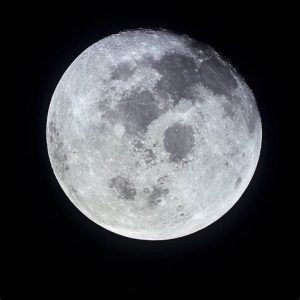
Our Moon from Apollo 11. Credit: NASA
Again the Romans followed this idea and named the Moon ‘Luna’, for their Moon goddess.
We still talk about ‘Lunar landings’ and, more scarily, ‘lunatics’.
Telescopic Planets
Uranus
William Herschel discovered Uranus in 1781.
He named the new world ‘Georgium Sidus’, George’s star, for his patron King George III.
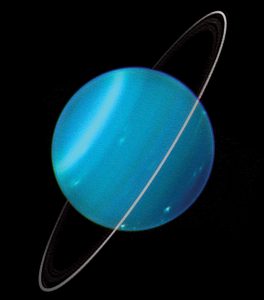
Uranus. Credit: NASA
The name was not popular outside England.
German astronomer Johan Bode suggested Uranus, the Roman god of the sky.
By 1850, the astronomical community accepted Uranus for the first planet discovered using a telescope.
Herschel’s flattery of the king seemed to work.
In 1782 he was appointed ‘King’s Astronomer’.
He received a large grant to build bigger telescopes and continue his exploration of deep space.
Neptune
The discovery of Neptune took place in stages.
Two astronomers, Urbain Le Verrier in France and John Couch Adams in England worked on anomolies in the orbit of Uranus.
It seemed to be affected by the gravity of another, unknown, planet.
Each astronomer calculated the position of the missing world.
Using these calculations, Johan Galle at Berlin Observatory discovered the new world.
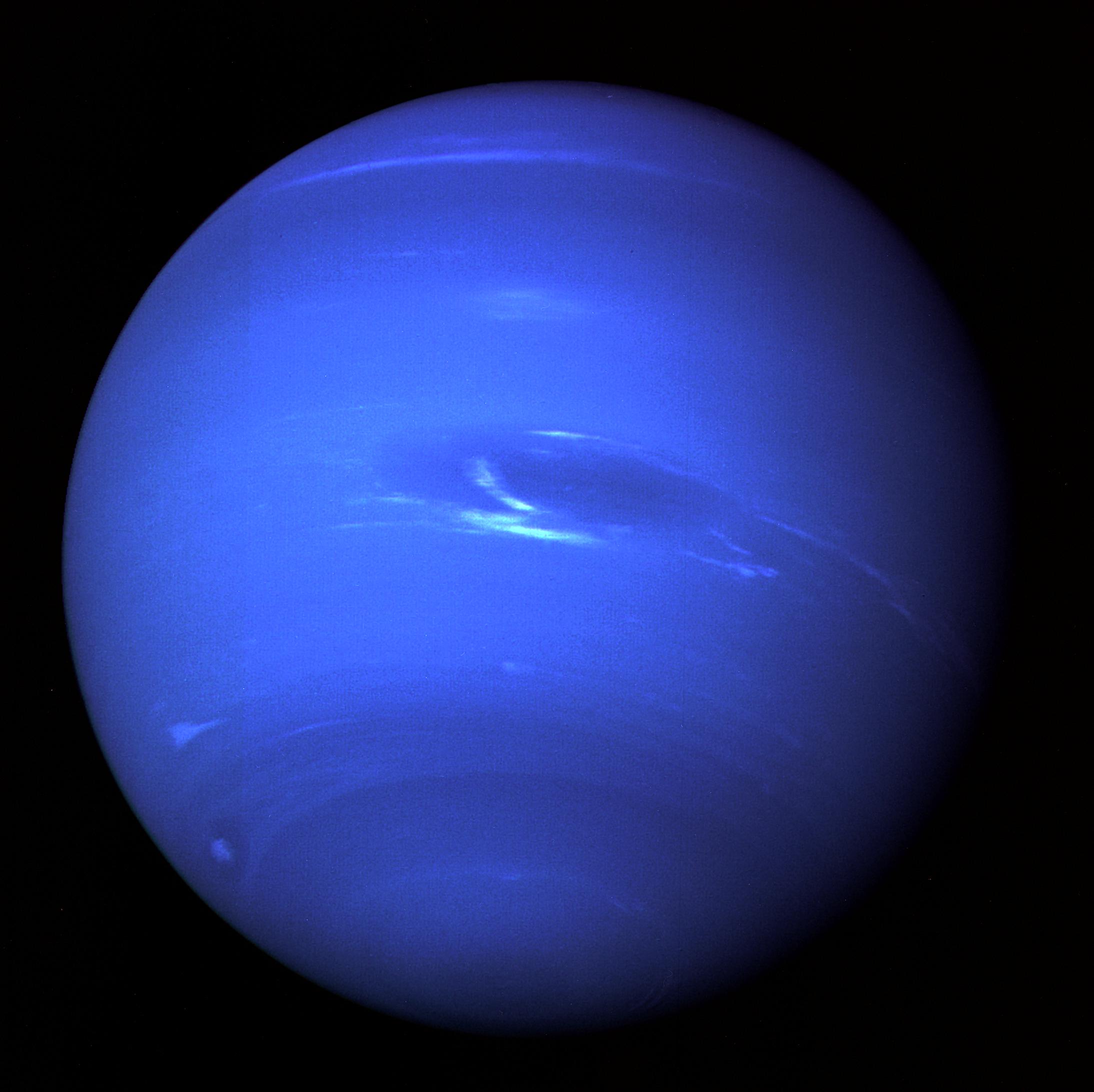
Neptune from Voyager. Credit: NASA
Le Verrier suggested that Neptune, the sea god, should be the name for the new planet.
It was quickly accepted because it followed the mythological nomenclature of other planets
Pluto
Pluto was discovered by Clyde Tombaugh at Lowell Observatory in 1930.
You can see the observatory and Tombaugh’s telescope in my blog here.
Pluto, New Horizons. Credit: NASA
Three names were suggested for the new planet.
They were Pluto, Minerva and Cronus.
One of the first people to suggest ‘Pluto’ was 11-year old Venetia Burney in England.
She mentioned this to her grandfather, Falconer Madan, who worked at Oxford University.
Madan passed on Venetia’s suggestion to Lowell Observatory.
The names were put to a vote to the American Astronomical Society and the Royal Astronomical Society in England.
Pluto won the vote and became the name for the ninth planet.
In a nice twist, Falconer Madan’s brother Henry had played a part in space names.
Planet Moons
In total, around 222 known moons orbit the planets of the Solar System.
They take up a lot of names!
Mars
Mars has two tiny moons, probably captured asteroids.
American astronomer Asaph Hall discovered them in 1877.
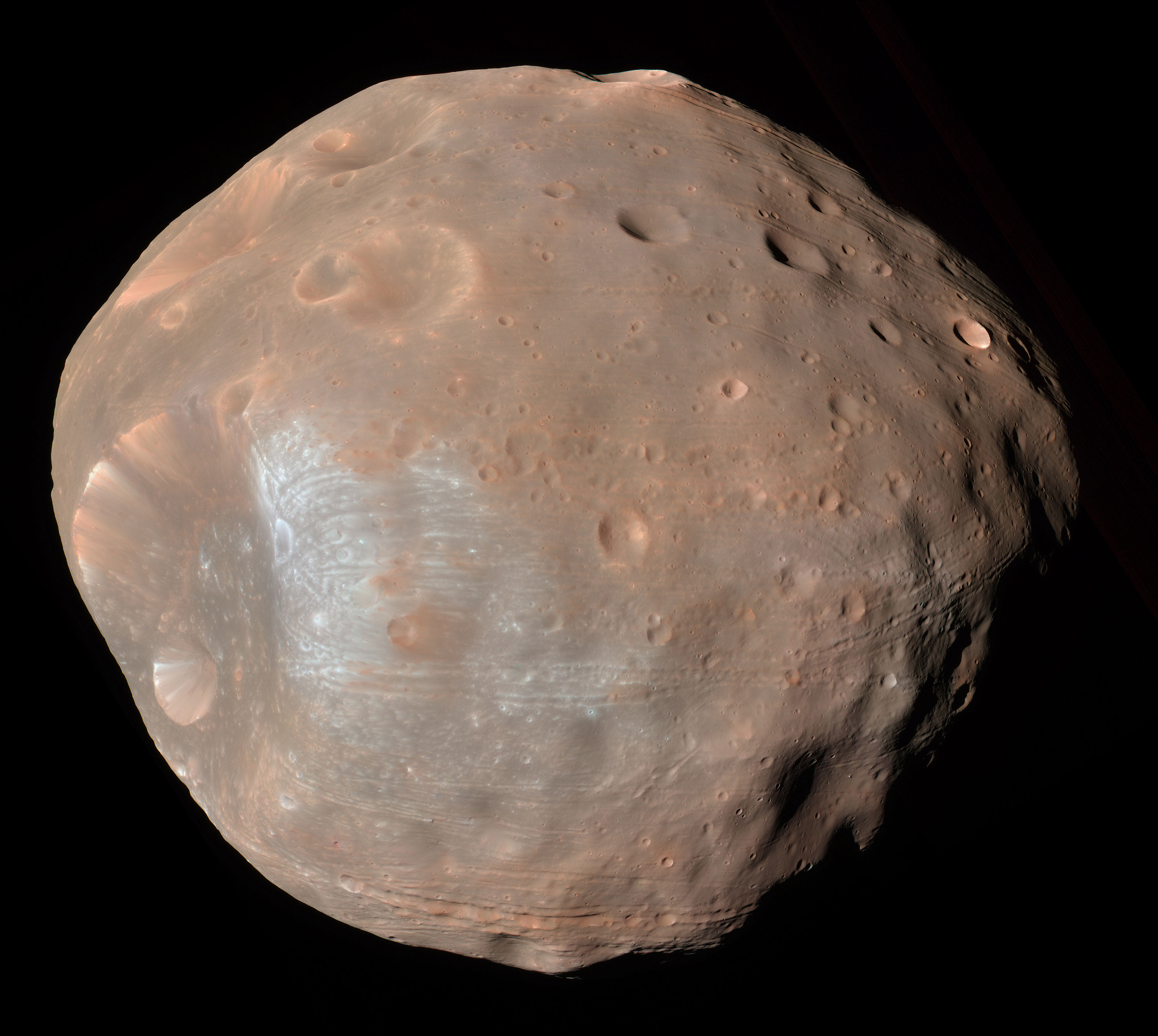

Phobos & Deimos. Credit:NASA
Henry Madan, a science master at Eton college, suggested the names Phobos and Deimos.
Phobos and Deimos were twins who went to war alongside Mars.
Phobos means fear & panic whilst Deimos carries terror & dread.
Jupiter
Jupiter has 92 moons, more than any other world, as befits the biggest planet.
Galileo Galilei discovered the four large moons of Jupiter in 1610.
He wanted to name them the Medician stars after his patrons, the Medicis.
However a German astronomer, Simon Marius, had observed the moons shortly after Galileo.
Marius named them Io, Europa, Ganymede and Callisto.
These names, suggested by Johannes Kepler, came from four lovers of Zeus, aka Jupiter.

Io, Europa, Ganymede, Callisto. Credit: NASA/JPL/DLR
At first the names didn’t catch on.
Galileo had also given them numbers and these were often used instead of names.
But eventually astronomers accepted Io, Europa, Ganymede and Callisto as the four great Galilean moons.
Over the years more and more Jovian satellites have been discovered.
The IAU decided to continue the Marius / Kepler theme.
Jupiter’s moons are named after Jupiter’s lovers and their descendents.
Fortunately Jupiter was profligate with his romances so consequently there are plenty of names available.
An inner group includes Amalthea, Metis and Thebe.
Orbiting beyond the Galilean moons are Themisto, Himalia, Carpo, Carme, Ananke, Pasiphae and many more.
Saturn
Saturn has 82 known moons.
Astronomer John Herschel named the seven then known satellites in 1877.
He used the names of mythological Greek giants.
So we have Mimas, Enceladus, Tethys, Dione and Rhea.
Among them was Titan, now known to be the second-biggest moon in the Solar System after Ganymede.
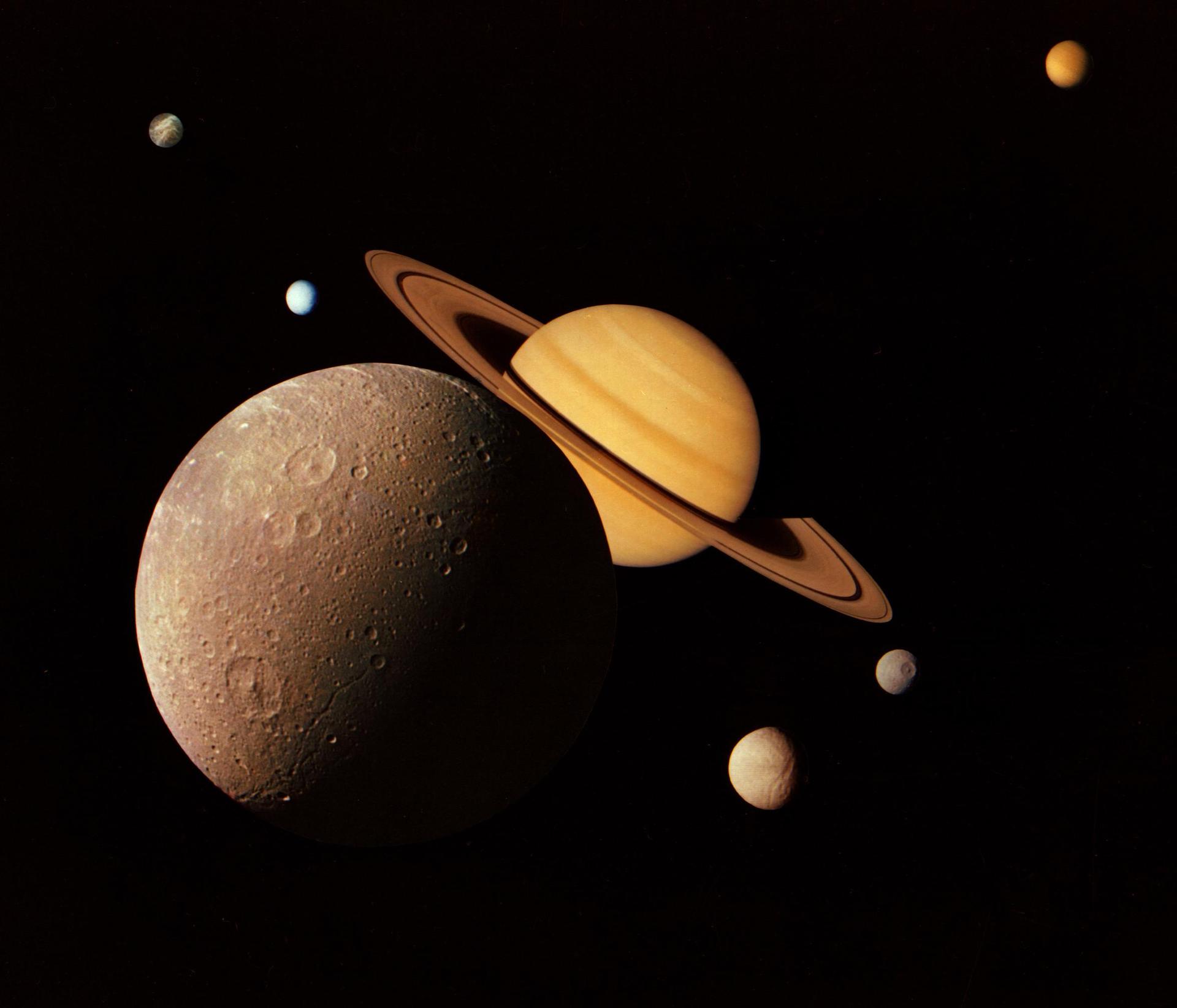
Saturn & moons. Credit: NASA/JPL
When other moons were discovered, astronomers continued the thread.
Hyperion, Janus and Phoebe belonged to the mythological family of Titans.
The IAU continued the monster theme.
Now we have moons named for Norse, Gallic and Inuit giants.
Uranus
Uranus has 27 moons.
The first known were named by John Herschel, son of the planet’s discoverer William.
John decided to name the moons after characters in English literature.
They come from Shakespeare plays and The Rape of the Lock by Alexander Pope.

Moons of Uranus. Credit: NASA/JPL
So Uranian moons include Ariel, Umbriel, Oberon, Titania, Miranda, Puck and Margaret.
I’ll let you name the plays from which they come.
Neptune
Neptune has 14 moons.
At the planet’s discovery, astronomers detected a single moon.
They named it Triton, son of Neptune.
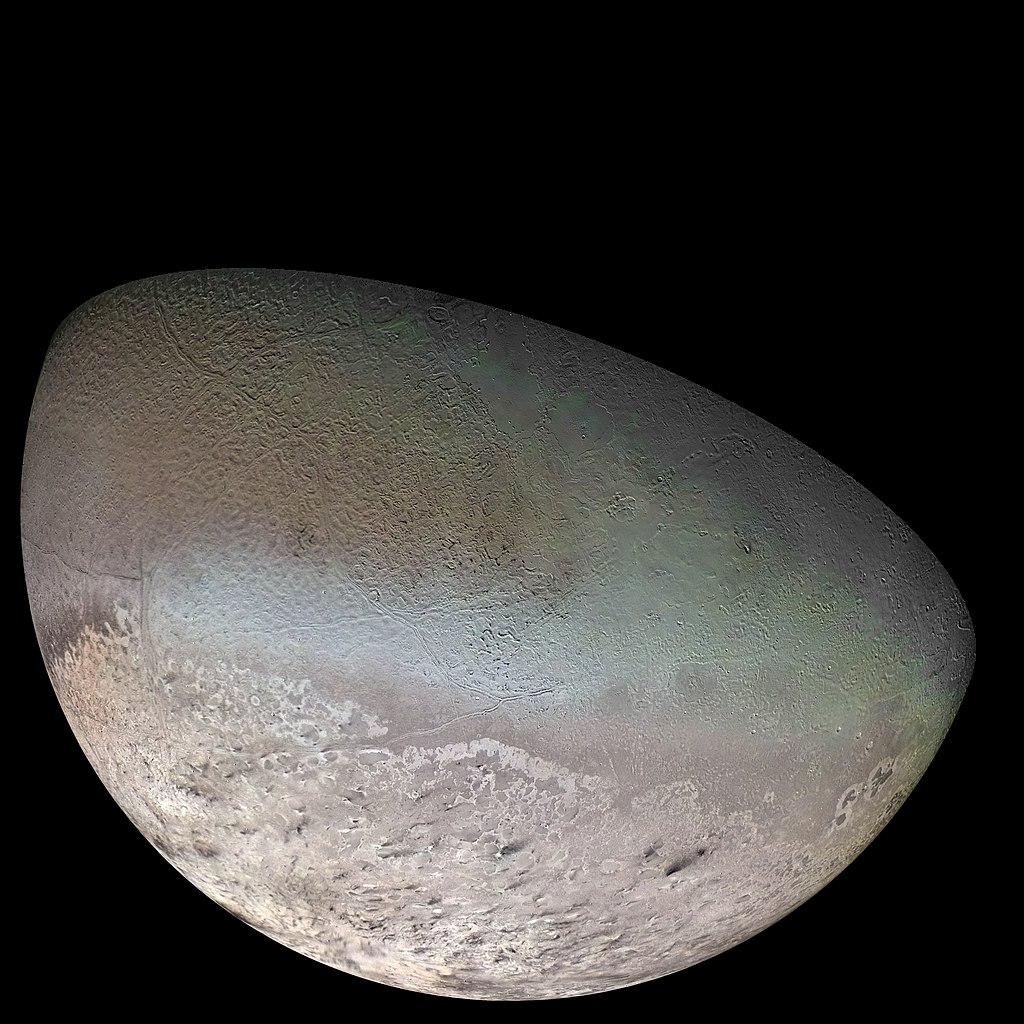
Triton from Voyager 2. Credit: NASA
When other satellites were discovered they too were named for water gods.
So we have Poseidon, Galatea, Hippocamp and Larissa in the fourteen.
Pluto
This dwarf planet has 5 moons.
Charon is the largest and received its name in a curious fashion.
American astronomer James Christy discovered the moon in 1978.
He suggested the name Charon.
His wife was Charlene and her nickname was ‘Char’.
Christy’s colleagues suggested other names but then Christy found a splendid coincidence.
In Greek mythology, Charon is the ferryman of the dead and connected to Pluto.
And there was a further remarkable coincidence.
In a 1940 sci-fi novel, auther Edmond Hamilton had invented three moons orbiting Pluto.
He called them Charon, Styx and Cerberus.
So Charon it is!

Pluto & Charon. Credit: NASA/JHUAPL/SwRI
On the discovery of four more moons, Hamilton’s names were given to two of them.
So now Pluto has Styx and Kerberos along with Nix and Hydra.
More to come
Well that was fun!
I really enjoyed researching and writing about astronomical names.
But we’re not finished yet.
In an upcoming blog, I’ll tell the story of how other cosmic objects received their names.
We’ll look at asteroids, comets and dwarf planets.
Maybe we’ll see how you can have a world named for you!
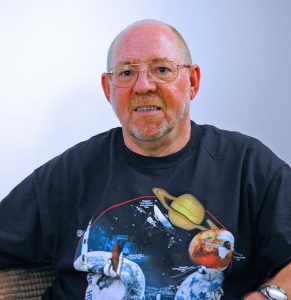
The author: Dennis Ashton is a Fellow of the Royal Astronomical Society and a Wonderdome presenter.
Would you like to hear more Astronomy news?
Do you want to to find out about our upcoming public events?
Follow WonderDome Portable Planetarium on Twitter and Facebook or go to our web site wonderdome.co.uk

